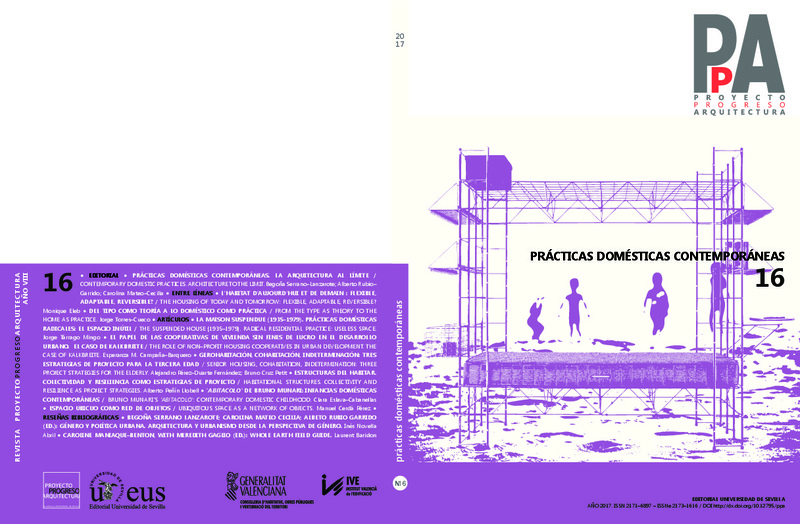JavaScript is disabled for your browser. Some features of this site may not work without it.
Buscar en RiuNet
Listar
Mi cuenta
Estadísticas
Ayuda RiuNet
Admin. UPV
Prácticas domésticas contemporáneas. La arquitectura al límite
Mostrar el registro completo del ítem
Serrano Lanzarote, AB.; Rubio Garrido, AJ.; Mateo-Cecilia, CA. (2017). Prácticas domésticas contemporáneas. La arquitectura al límite. Proyecto, Progreso, Arquitectura. (16):14-18. doi:10.12795/ppa.2017.i16.11
Por favor, use este identificador para citar o enlazar este ítem: http://hdl.handle.net/10251/107431
Ficheros en el ítem
Metadatos del ítem
| Título: | Prácticas domésticas contemporáneas. La arquitectura al límite | |
| Otro titulo: |
|
|
| Autor: | Rubio Garrido, Alberto José Mateo-Cecilia, Carolina Arantxa | |
| Entidad UPV: |
|
|
| Fecha difusión: |
|
|
| Resumen: |
[ES] La pregunta por la relación entre la vivienda y la sociedad cobra un sentido enfático si se entiende desde el extraña
-
miento provocado por la irrupción de la modernidad en la arquitectura. La pregunta, hoy, es si ...[+]
[EN] If we understand the relationship between housing and society from the estrangement provoked by the irruption of modernity in architecture, it takes on an emphatic meaning. The question today is whether bewilderment ...[+]
|
|
| Palabras clave: |
|
|
| Derechos de uso: | Reconocimiento - No comercial - Sin obra derivada (by-nc-nd) | |
| Fuente: |
|
|
| DOI: |
|
|
| Editorial: |
|
|
| Versión del editor: | http://dx.doi.org/10.12795/ppa.2017.i16.11 | |
| Tipo: |
|









